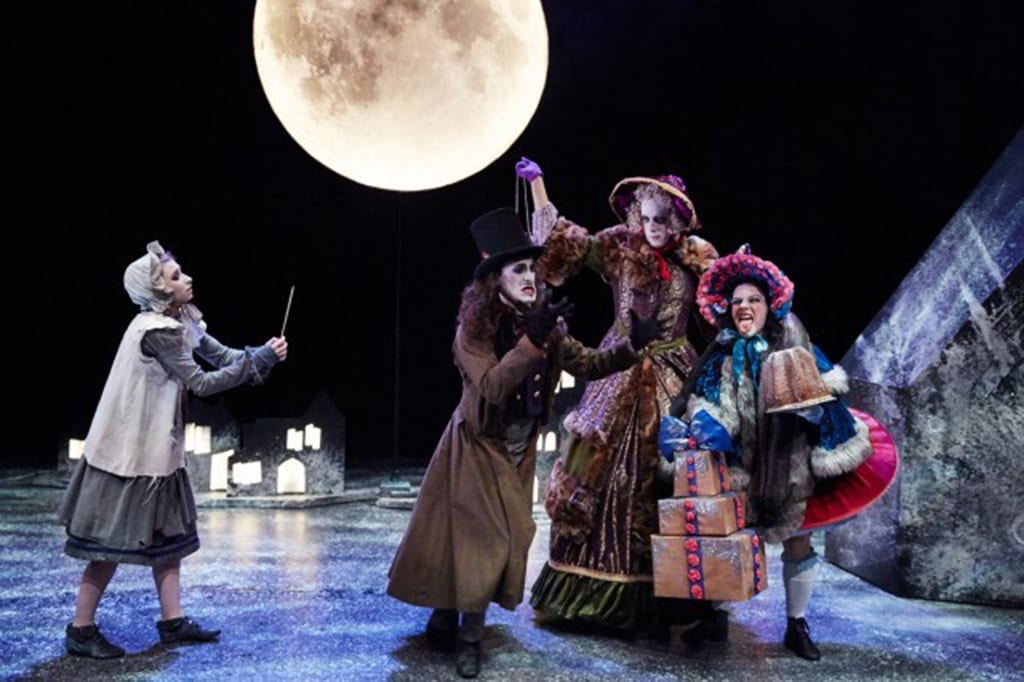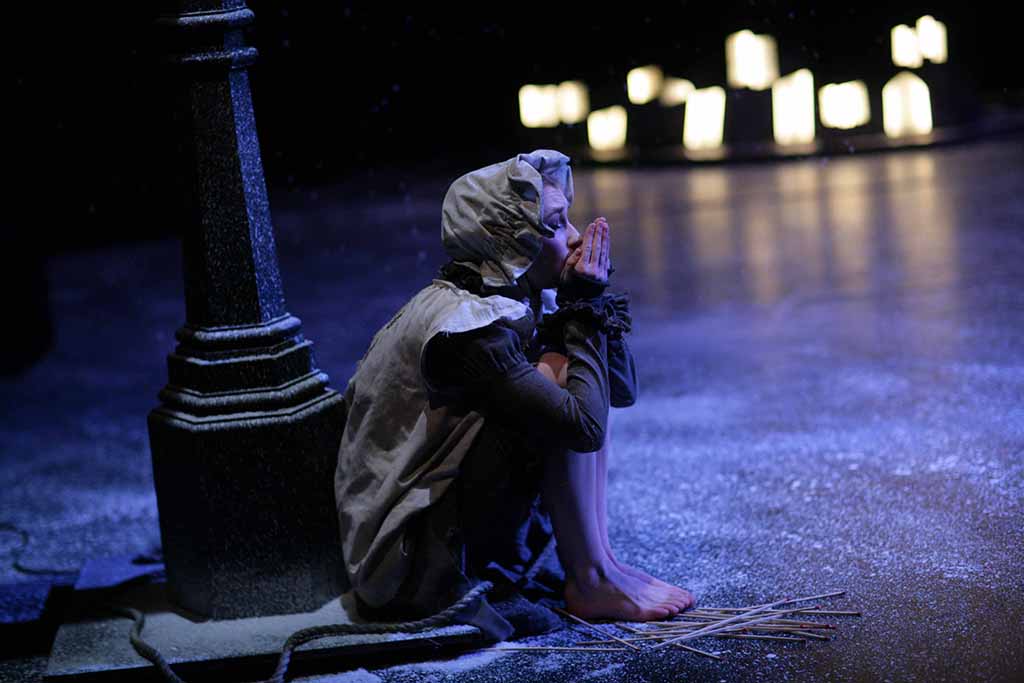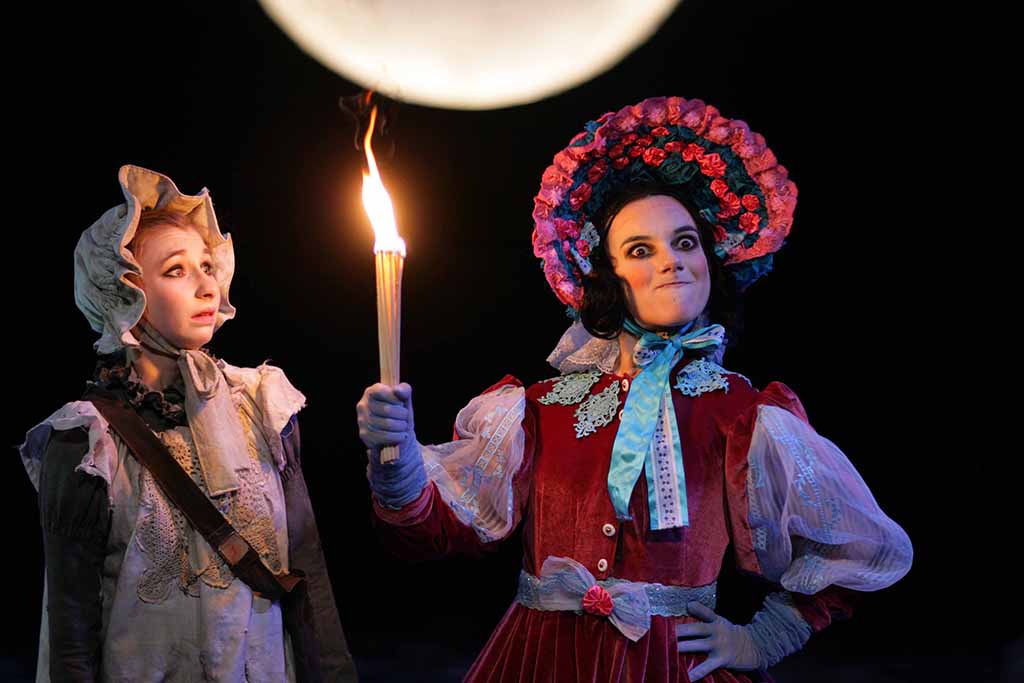Hans Christian Andersen’s original story of 1845 is short and to the point. A poor little match girl struggles in vain to sell her matches on the winter streets. She is scared to go back to her cold home where her father will beat her. She lights her last remaining matches to warm herself a little. The meagre flames summon up successive fantasies of a cosy hearth, then of a table of food, then her dead grandmother’s kindly regard. The little girl prays to her grandmother to rescue her, to take her away with her, when the last match-flame expires. Her prayer is answered. While the girl’s corpse lies on the pavement, her spirit joyously joins her dead grandmother.
There’s no escaping the purport of Hans Christian Andersen’s tale: if you are miserably poor, your only escape lies in death.
Now that wouldn’t make for a fun night out with the family. In his own version of The Little Match Girl, choreographer-director Arthur Pita alchemizes this gloomiest of tales and turns it into energising Christmas gold-dust for the whole family. His nicely short production could just as well have been called “The story of how the stars get to light up in the sky”. It propels us through a gamut of emotions from jollity and sadness, through fear to despair, and ends on a poignant uplifting note and then a jolly knees-up. We may all leave the theatre smiling. And we do.
Nevertheless, there were some troubling moments when our own spoilt self-regard and blindness to the suffering of others was brought rather too close for comfort. My four-year-old companion-critic, who in the wake of the show’s sublimely amusing moon-walking scene now plans to become an astronaut, said that the scariest part of the evening was when Fiammetta, the little match girl, angrily set fire to the house of the horrible rich people. Out of the mouth of babes. That scene was scary for the grown-ups too because – isn’t the little match girl supposed to be good? It is difficult to square arson with a supposed moral tale. That is one instance of how the story-line skilfully portrays the economically abandoned Fiammetta not as a passive victim, as in the original plot, but as someone protesting as best she can against her unfair circumstances. Perhaps the morality tale genre has been decimated by our present-day custom of excusing or justifying destructive acts of revenge against political, social and economic discrimination.
For the adult member of the audience, the style of the production is especially interesting. Imagine a Dickensian expressionist balletic politico-comic operetta romp that still brings a tear to the eye, and you’d be covering some of its delightful oddities. The music is ingenious and is made – itself like magic – right in front of your eyes. The sets are cleverly minimalist without being modern, the costumes cleverly flamboyant without being passé. The lighting is so good that, like the best lighting, you don’t notice it, it is just right.
The multi-talented actor-dancers were a mere foursome, with Fiammetta always playing herself. I was so taken in and swept away that it was only at the curtain call that I realised how much doubling up there had been. By the time I got home I was still counting on my fingers trying to work out how three performers had played ten distinct parts and surely half of them were on the stage at any one time. In more ways than one, Arthur Pita’s “The Little Match Girl” gives you more than you expected, and it is all good.




